John Hurrell – 28 November, 2024
With the poplar panels the room's lighting greatly affects the visible sections of white wall between the rectangles, and the shadows and reflections on it near the corners. In contrast the more highly saturated and individualistic coloured slate pieces (that are flush with the wall) catch the light dragging across the thin chipped and flaked surfaces. Each held in place by two centrally positioned holes and two nails.
Auckland
Winston Roeth
The Unbearable Lightness of Seeing
16 November - 14 December 2024
This is a typical Roeth show with its interest in retinal investigation and the nuances of experienced colour, as affected by chromatic context. Consequently, it encourages prolonged looking for each of the eight works, taking time for the eyes to adjust, and perhaps to ponder some of the theoretical ideas of Bauhaus masters Albers and Itten—about perception of flat colour—specifically the importance of juxtaposition, mass and proximity.
Most of the eight works are grids of rectangular poplar panels or pieces of painted slate in horizonal or vertical rows so they are carefully kept apart equidistantly. In each poplar panel is a thick painted monochrome rectangle (of hot or cold yellows) surrounded by a monochromatic painted-on frame (of differently combined violets, umbers and siennas). The thin cross-sectioned slate pieces in contrast are each covered by one unique colour only. In some, metallic pigments are mixed with non-sheen matte pigments
With the poplar panels the room’s lighting greatly affects the visible sections of white wall between the rectangles, and the shadows and reflections on it near the corners. In contrast the more highly saturated and individualistic coloured slate pieces (that are flush with the wall) catch the light dragging across the thin chipped and flaked surfaces. Each held in place by two centrally positioned holes and two nails.
The grids, whether craggy slate panels or painted ‘framed’ poplar ones, emphasise the particularity of each colour mix-their individual specialness. There is far more optical ‘bounce’ in the former, the chromatic range in the latter being less and the differences possibly more subtle.
The two ‘Quintets’ emphasise horizontal movement and chromatic sequencing on a single level only, where the eye moves from left to right, savouring each positioned colour sensation one at a time—as they jostle with their competing neighbours.
Two carefully considered orchestrations are presented: one about incandescent saturation, the other cooling temperature. Rarefied, but also deeply muscular and intestinal, we discover more than what is at first apparent.
With two single panel works the artist explores ocular penetration of a densely chromatic square field and the effect of the frame that anchors the plane to the wall. In each case the surface is texture-free with colour sensation striving for purity, the deeply dark and pale hues dominating the material aspects of the two supports. Pristine geometry is contained, the constantly consistent field showing no hints of dissipating. Cohesive morphological units.
John Hurrell
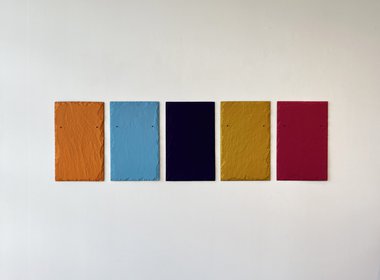
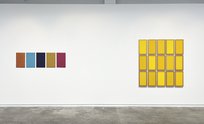
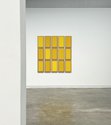
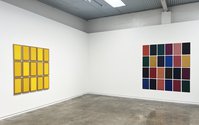
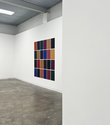

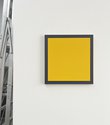
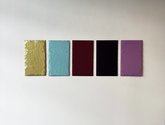
 Advertising in this column
Advertising in this column Two Rooms presents a program of residencies and projects
Two Rooms presents a program of residencies and projects



This Discussion has 0 comments.
Comment
Participate
Register to Participate.
Sign in
Sign in to an existing account.